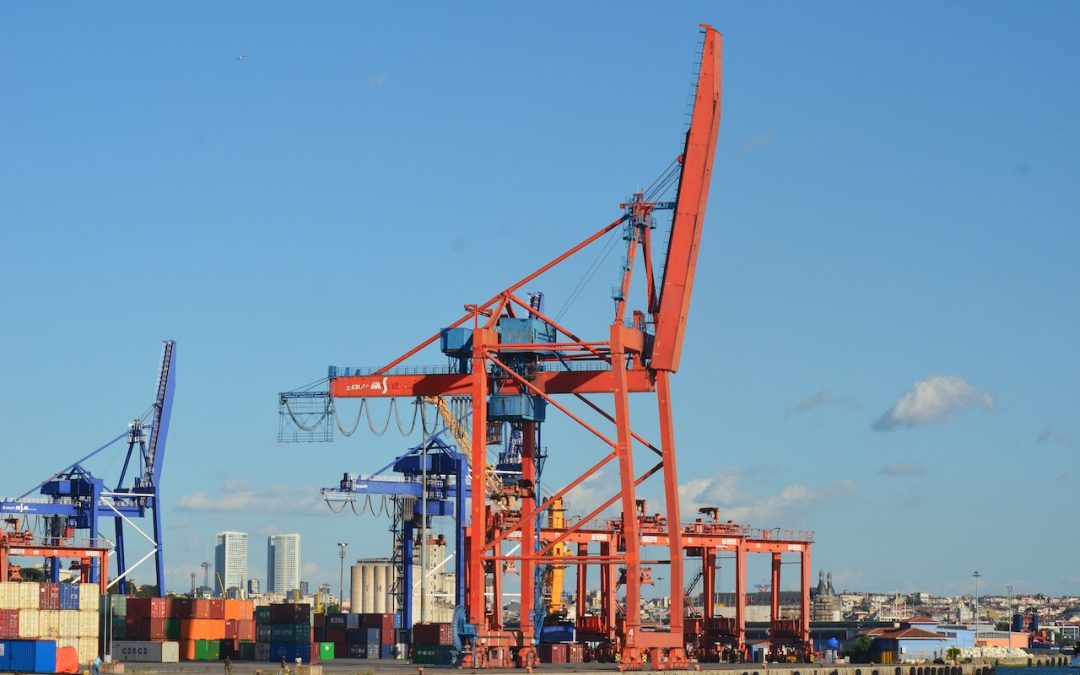You might have noticed that international shipping rates were recently at an all-time high.
But why? Where is the money going?
Are forwarders raking it in? Sadly not.
The cost of shipping between China and the UK did increase by over 1000% in the last couple of years. Let’s explore some reasons why.
COVID-19
The COVID-19 pandemic ran a train through global supply chains.
Right from the off, the pandemic affected the worldwide system of manufacturing, buying and selling goods in early 2020. The sector simply hasn’t recovered, meaning shipping prices have remained sky high.
COVID disrupted the industry in many ways, including:
- Mismatched lockdowns across trading countries
- Unprecedented demand for consumer goods
- International rules and restrictions enforcing PPE, social distancing measures and disinfection routines, meaning everything took longer and was, therefore, more expensive
- Reduced staff capacity when individuals became unwell
- Quarantined ships reduce capacity
- Close factories in China delayed the shipment of goods
Thankfully, falling infection rates combined with vaccine take-up mean that COVID-19 should stop having such a drastic impact on both the world and the shipping industry as it tails off. But it could take some time before the freight industry fully recovers.
What About Brexit? Is That Also To Blame?
A little. But mostly only for those doing trade in or with the UK to and from Europe.
Changes to regulations as huge as the border custom changes incurred by Brexit affects shipping costs.
And increased authorisation requirements and entry documentation for all shipments leaving or entering the UK has put a halt to fast turnaround, inflating costs further.
It has had an effect. But it was never forecasted to have as big an impact as we’re seeing at the moment so, while it is a pain in the backside, it’s not the main cause of the increased costs.
Missing Containers
Shipping a product involves packaging materials, cardboard boxes, shipping containers and the ships/vessels themselves. And most of Europe’s shipping containers come from China.
COVID-19 and the associated lockdowns put all of these elements in high demand, so prices rocketed. It’s not as simple as building more ships, because that would take years, and shipping container manufacturers themselves – and the companies that were supplying the parts – were all affected by lockdowns too.
And so, in the wake of the pandemic, there was a global shipping container shortage.
Why?
China came out of lockdown as the rest of the world went into it. As the demand for goods from people stuck at home rose, China sent more containers to these markets. The containers were not readily returned and were now stuck in the wrong places, under tighter restrictions.
Inevitably, this put a premium on any that were available to use, having a huge impact on the shipping prices we’re seeing today. According to the World Trade Organization, shipping a container from Felixstowe to Shanghai will now set you back up to £3,500, where it was only £600 pre-COVID.
Suez Canal Incident
12% of the world’s trade goes through the Canal.
March 2021 saw a shipping vessel block the entire waterway for a whole week, and as a result of the delays, international trade suffered to the sum of around $3 billion.
An incident like this has a domino effect. Ports were already under pressure and big incidents like a ship blocking a canal massively delays ships, putting even more strain on the system. The Suez Canal incident played a huge part in pushing the price of shipping through the roof.
How To Get Through It
It’s not an impossible situation. Businesses can work to alter how they are shipping their goods, or even find alternative methods of shipping that serve them better.
1 – Check Your Shipping Terms
Incoterms spell out who pays for what shipping costs, so shipping under different terms could work to save your company money. Revisit your incoterms and make sure you understand what they mean.
2- Research Freight Forwarders
If your cargo is on the smaller side, consider using less well-known shipping agents who specify in forwarding freight in the direction you need it to go.
3 – Change Up Your Mode Of Transport
Air freight has always been much more expensive than shipping via container, around 12-16 times more costly in fact. But planes are faster and more secure than boats, so with prices at an all-time high, it is worth doing a comparison.
Shipping via air freight is more reliable and gets your goods to their destination in days rather than weeks.
4 – Relocate Your Manufacturing Operations
China is the giant of the manufacturing world but, for the foreseeable, it is also a messy traffic jam to navigate if you want anything shipped.
If parts of or all of your goods are made in China, this is a good time to consider moving manufacturing locations to mitigate risk AND shipping costs.
Outsourcing your manufacturing to a location near your primary market makes the most logistical sense, but do some calculations for a variety of locations to compare.
5 – Do It Yourself
This one requires a bigger influx of cash up front but is cheaper in the long run.
Putting into place your own delivery infrastructure means you’re in charge. No pricing surprises for you anymore! It’s harder work and needs a chunk of capital to get you going, but for many businesses, it can be worth the trouble.
Does The Rate Of Shipping Prices Send You Reeling?
There are plenty of ways to mitigate soaring shipping costs, but do you have the time to do the research? What if the freight option you choose is cheaper but unreliable?
Navigating the shipping market can feel quite the ordeal.
Call Millennium today and we will help you to find the best freight options for your needs, at the most competitive rate.

